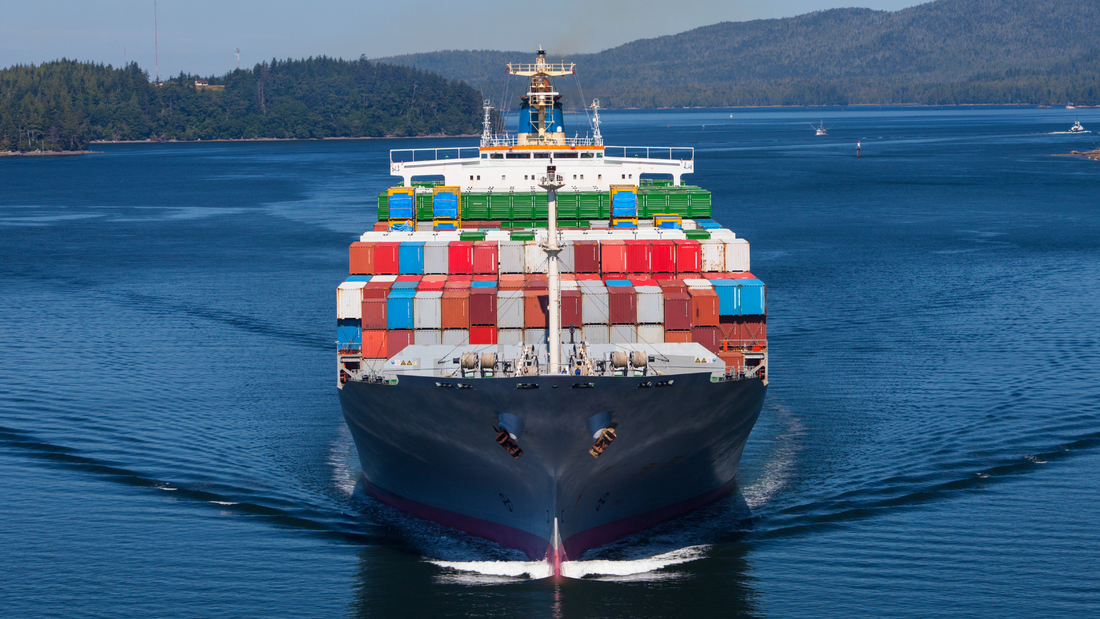Interview with Daniel Johns of BIG Logistics
An Insight into the Current Chaos of Global Shipping and How It Affects Us All.
Gas prices have risen steadily this year. So have prices for food and basics…. And they’ve risen by enough to make us all wonder…. What in the world is going on? There has also been a lot of chaos with what is termed “lead times,” meaning the time between which you order something and receive it has because often much longer, and certainly more unpredictable and chaotic.
We do not have all the answers here at kanju, but we manage these cost and logistics challenges as we are importing things and shipping them and therefore see a little bit behind the curtain – and what we’ve seen recently is staggering! So, we decided to try and learn more and wanted to share some of that insight with all of you….

At Kanju, we source from all over Africa from groups both large and small. Logistics and shipping has always been a significant and trying task even before COVID began. We knew that building relationships and internal skills in this space could make or break us.
Since the start of COVID, the logistics side of things and the effort and time to manage it has magnified to become an intense obstacle, not only for kanju, but for most businesses across the country and the globe. It touches quite literally every piece of our daily lives – like gas, materials and labor costs, to name a few. To understand a bit more about how shipping challenges are driving this impact, we interviewed our very own shipping partners, Big Logistics. Meet Daniel Johns, who has a hand in most aspects of the Big Logistics and was able to give us some great insight!
Daniel has a background in the hospitality industry and bartended for many years. He had a customer who always mentioned coming to work with his company to do shipping sales and eventually he got in touch with his contact, Derek Miller, manager of Big Logistics Customs Brokerage Department, and began working in their sales department. As it turns out, a background in hospitality is the perfect background to working in shipping and logistics, because managing customer expectations and communicating is arguably the most important and difficult part of the job.
As the company grew and Daniel’s experience grew, he moved into other roles of the company, dabbling in operations and management, and now he runs a lot of the day to day functions of the business and still oversees big accounts. When COVID first hit, it turned global shipping “…completely upside down” Daniel said. “Customer demand has been the biggest driver…” affecting the import business.
Basically, predictions went out the window. People were stuck at home, and economies contracted in some ways, but in other ways, people were purchasing at unprecedented levels – masks, medical supplies, home goods…. All compounded by new, overnight government restrictions and regulations and government to government contracts on essential goods superseding any and all “non-essential” consumer goods. The consumer demand became so huge practically overnight that shipping and air freight just couldn’t keep up. Simultaneous, manufacturing of goods slowed significantly as a result of lockdowns – factories and businesses simply could not operate to produce items.
As COVID started to shut countries down at different times and with many countries having varying levels of health care and varying approaches to mandates and lockdowns, slow downs turned into insurmountable backlogs and bottlenecks all across the globe. As Daniel explains, “one thing triggers another and it’s a constant snowball and it doesn’t look like it’s going to let up until possibly 2023”.

"COVID hit and turned global shipping... completely upside down” - Daniel Johns
In the US, the West Coast has been the hardest hit. Big Logistics often works with containers coming out of Asia. As merely one example, one of the biggest ports in Asia has completely closed indefinitely, among many other things, due to a limited amount of containers, limited availability on those containers and a massive shortage of labor. This has created a huge inflation on shipping costs to the tune of $18,000 per container shipping from Asia to LA, when it previously cost between $2,000-$2,500 per container – and most companies will not even offer inland delivery right now, meaning another contract, and another bill, with yet another company to get goods to their final destination… all of which means more delays. “We’ve seen containers go as high as $20,000-$22,000 at times.”
All of this is the perfect storm to create massive backlogs at ports and warehouses. As any quick economy lesson would teach you about supply and demand, it doesn’t stand as a surprise that steam ship lines are seeing record profits this year being able to charge a premium for the space that these few containers can hold – and they aren’t in any particular rush to speed up changes that would reduce their profits back to normal levels. Air freight is finally somewhat leveling off, however it all but completely died last year as air travel was suspended. With less planes flying, fuel costs up and again, and a shortage of labor, the result is, again, a seemingly endless cycle of jammed up supply chains.
Simply stated, all businesses have had to manage through these hurdles, and we’ve been no different. Daniel tells us that between he and Derek, with their many years of experience, they’ve never seen market conditions like this – ever. We are grateful that, since our routes are less busy ones and Atlantic-focused, we’ve avoided some of the worst hits. On the other hand, our customers here in the US have had to share in the unpleasant experience of higher local shipping costs, more damaged items, and longer shipping times.



